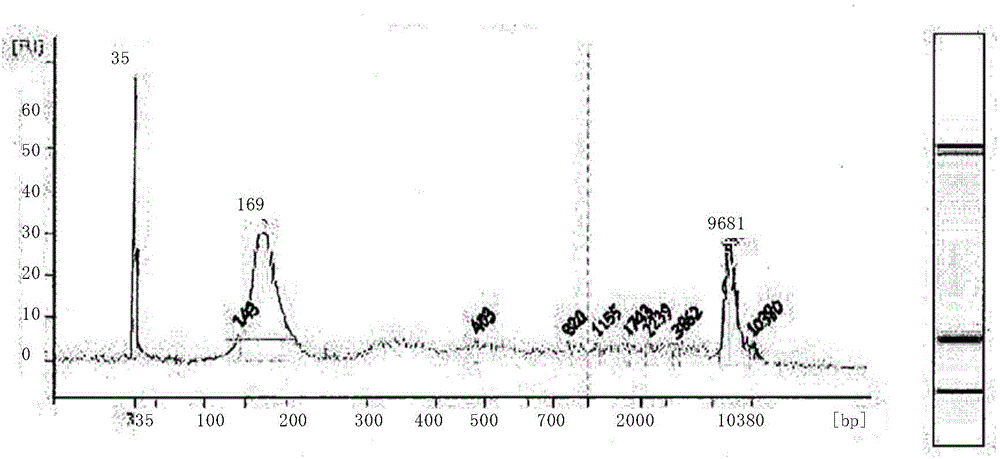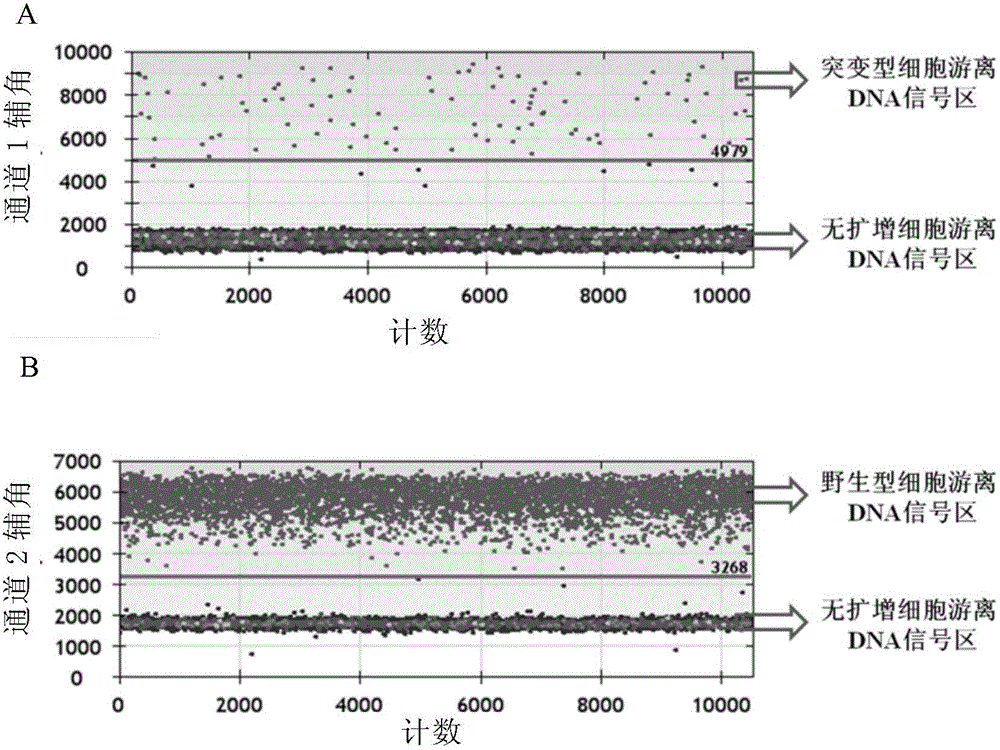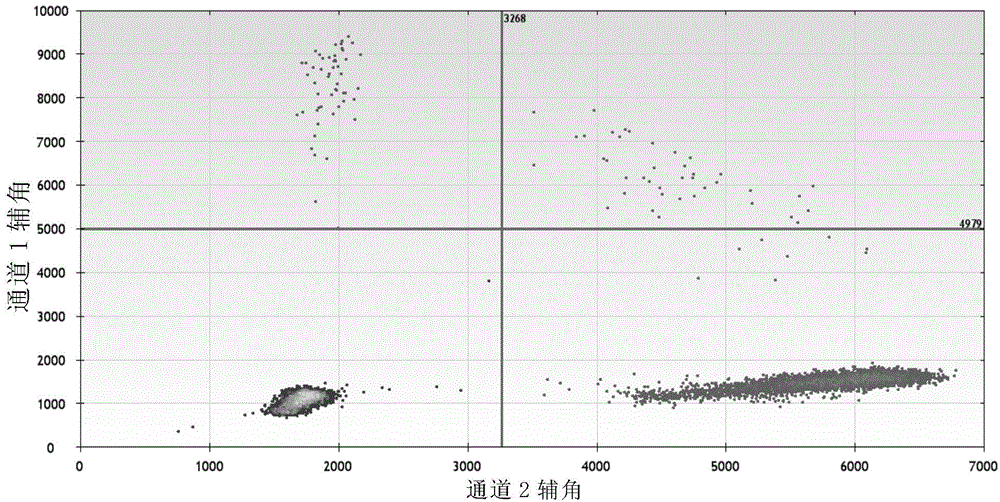Method for monitoring secondary drug resistance of lung cancer patient to tyrosine kinase inhibitor through ddPCR technology
A technology of tyrosine kinases and inhibitors, which is applied in the fields of medicine and biology, and can solve the problems of lack, low plasma free DNA content, difficult detection of free DNA types and sequences, etc.
- Summary
- Abstract
- Description
- Claims
- Application Information
AI Technical Summary
Problems solved by technology
Method used
Image
Examples
Embodiment 1
[0198] Example 1 Detection of EGFR gene mutations in serum / plasma by ddPCR technology to monitor lung cancer patients' secondary resistance to tyrosine kinase inhibitors
[0199] (1) Take 4 mL of peripheral blood from the patient, separate the plasma / serum, and use the "QIAamp Circulating Nucleic Acid Kit" to extract the free DNA in the plasma / serum. High-concentration and high-purity DNA was obtained through sample dissolution, enrichment, column elution, and finally AVE elution, and finally the fragment size (<313bp) was determined by agarose gel electrophoresis to ensure the extraction quality.
[0200] (2) Reaction system preparation
[0201] a. Design of probes and primers: The present invention adopts the conventional Taqman probe method to design, and respectively designs wild-type and mutant probes for the target fragment of the EGFR gene. The FAM fluorescent channel marks the mutant type, and the HEX fluorescent channel marks the wild-type. , the wild-type and mutant...
Embodiment 2
[0214] Example 2 Detection of EGFR gene mutations in serum / plasma by ddPCR technology to monitor secondary drug resistance of lung cancer patients to tyrosine kinase inhibitors
[0215] (1) Take 4 mL of peripheral blood from the patient, separate the plasma / serum, and use the "QIAamp Circulating Nucleic Acid Kit" to extract the free DNA in the plasma / serum. High-concentration and high-purity DNA was obtained through sample dissolution, enrichment, column elution, and finally AVE elution, and finally the fragment size (<313bp) was determined by agarose gel electrophoresis to ensure the extraction quality.
[0216] (2) Reaction system preparation
[0217] a. Design of probes and primers: The present invention adopts the conventional Taqman probe method to design, and respectively designs wild-type and mutant probes for the target fragment of the EGFR gene. The FAM fluorescent channel marks the mutant type, and the HEX fluorescent channel marks the wild-type. , the wild-type and...
PUM
 Login to View More
Login to View More Abstract
Description
Claims
Application Information
 Login to View More
Login to View More - R&D
- Intellectual Property
- Life Sciences
- Materials
- Tech Scout
- Unparalleled Data Quality
- Higher Quality Content
- 60% Fewer Hallucinations
Browse by: Latest US Patents, China's latest patents, Technical Efficacy Thesaurus, Application Domain, Technology Topic, Popular Technical Reports.
© 2025 PatSnap. All rights reserved.Legal|Privacy policy|Modern Slavery Act Transparency Statement|Sitemap|About US| Contact US: help@patsnap.com



